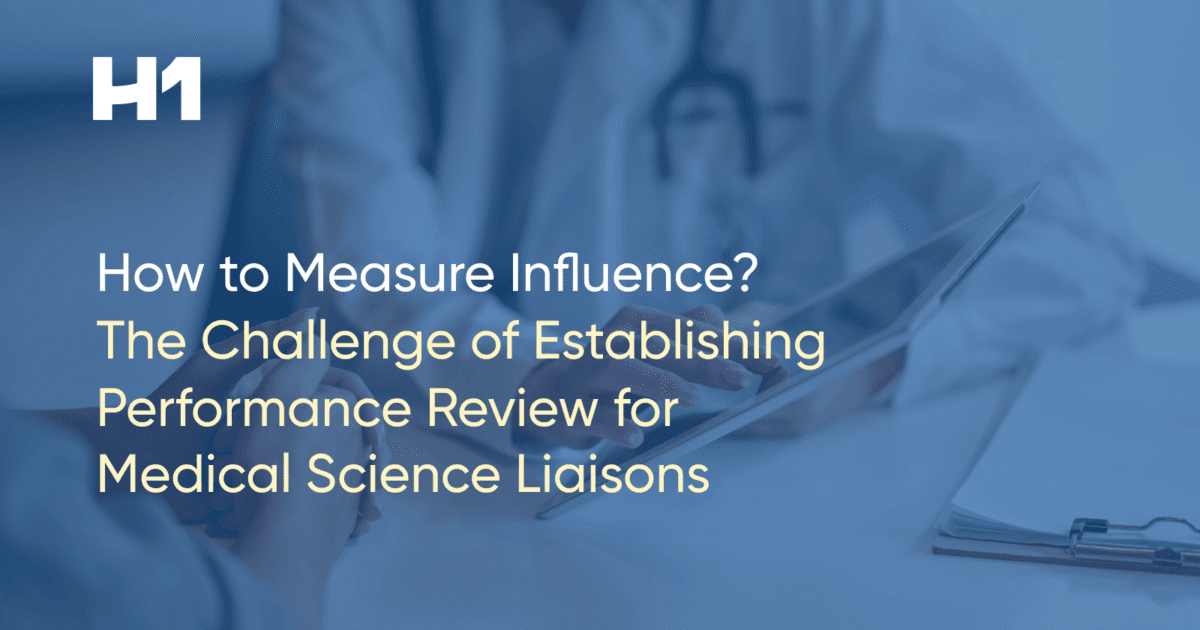The Challenge of Performance Review for Medical Science Liaisons

How to Measure Influence?
The daily responsibilities of a Medical Science Liaison (MSL) are varied and broad but a common denominator is their central role in interacting with, informing, and educating stakeholders in the healthcare industry, specifically key opinion leaders in their area of expertise. The importance of this function is highlighted by the increasingly high profiles that MSLs enjoy in the biopharma industry as well as their growing numbers, especially compared to field sales.
However, unlike sales, medical affairs and with that MSLs, are a cost center and in times of ever-increasing drug discovery and development costs and tightening budgets, crucial questions need to be addressed: how does one best measure performance of MSLs? What KPIs are appropriate and fair?
Quantitative metrics work well for sales and marketing but are challenging to implement for MSLs whose work does not directly contribute to the top line and can’t be counted in click-throughs or social media likes. An MSL’s main role is getting the right information to physicians when they need it – and that is exceedingly difficult to measure and even harder to quantify.
KPI or no KPI?
One school of thought is that KPIs simply can’t be made to fit the varied responsibilities of MSLs with their intangible goals of educating and informing. The central argument is that traditional metrics, e.g. counting the number of interactions an MSL has with a KOL, reflect the quantity, not quality of interactions in a situation where quality is vastly more important and quality alone is not a useful indicator.
Quantitative vs. Qualitative KPIs
Most companies, however, want to measure what impact their growing MSL teams have and employ both quantitative and qualitative measures. Following is a discussion of both types of metrics:
- Quantitative performance metrics are fast and easy to track and are well-established for field sales. Similar metrics for MSLs – such as the time an MSL spends in the field, the number of total and new KOLs relationships they have fostered, or the number of scientific presentations they have given – are being used and have some value. However, taken in isolation, these metrics are unlikely to achieve the goal of building strong, long-term relationships with KOLs. Rather than focusing on the quality of a KOL interaction, KPIs that focus on reaching a target number of interactions can incentivize the MSL to prioritize quantity of interaction over quality outcomes from interactions.
- Qualitative KPIs, e.g. securing a meeting with a high profile KOL, gathering market and competitive intelligence, or obtaining feedback from stakeholders are intangible, often long-term, valuable, and exceedingly hard to measure. With more and more MSLs vying for the attention of the top thought leaders, securing a meeting is becoming more difficult and time consuming and, once scheduled, the quality of the interaction during that meeting is critically important. The trend of pharma companies employing larger MSL teams will contribute to further prioritization of quality over quantity.
The most promising approach to measuring the impact and value of MSLs have is to establish outcome-based KPIs. These metrics focus less on what an MSL does and more on the results of an MSL’s activities. Outcome-based KPIs generally are a combination of both qualitative and quantitative metrics. An example for such an outcome-based KPI is the number of KOL relationships and interactions that lead to a defined desired outcome, e.g. the participation of a KOL in a clinical trial.
The debate about how to best assess MSL performance and what KPIs to use is not over. No industry standard has been established and given the changing nature of the MSL profession, the search for the best way to measure how MSLs successfully educated and inform stakeholders is going to continue.